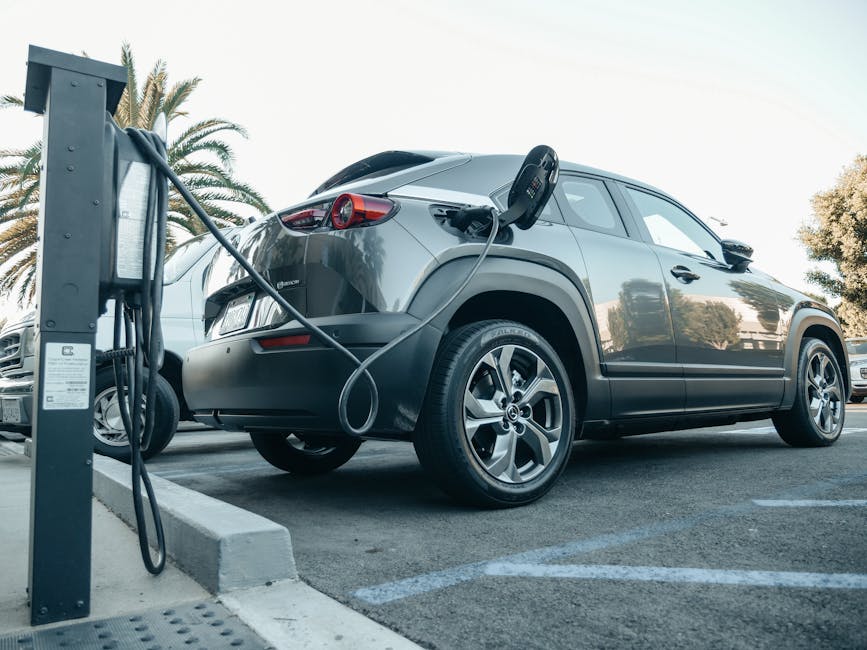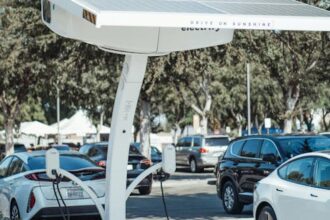From flying vehicles to fully autonomous sedans, the automotive revolution is accelerating faster than ever. These groundbreaking vehicles will transform how we drive, commute, and think about transportation in the next few years.
The automotive industry is experiencing its most dramatic transformation since the invention of the combustion engine. Electric powertrains, autonomous driving technology, and revolutionary design concepts are converging to create vehicles that seem straight out of science fiction. Yet these aren’t distant dreams—they’re production-ready cars hitting dealerships and roads within the next 24 months.
With global electric vehicle sales projected to reach 17 million units in 2025 and autonomous vehicle technology advancing rapidly, we’re standing at the precipice of a transportation revolution. Here are ten futuristic cars that will fundamentally change our relationship with driving sooner than you might expect.
1. Tesla Cybertruck (2025)
Arrival Timeline: Already in Production
The Tesla Cybertruck represents the most radical departure from traditional truck design in automotive history. Every Cybertruck comes standard with Tesla’s Autopilot driving feature, though full autonomous driving remains optional. This angular, stainless steel behemoth offers three powertrain options, with the top-tier model delivering over 845 horsepower and a 0-60 mph time under 2.6 seconds.
Key Features:
- Bulletproof exoskeleton made from ultra-hard 30X cold-rolled stainless steel
- Up to 340 miles of range with tri-motor all-wheel drive
- 11,000-pound towing capacity
- Adaptive cruise control with traffic awareness, lane centering, and 360-degree camera system
The Cybertruck’s polarizing design masks sophisticated technology including air suspension, rear-wheel steering, and an innovative “vault” bed design. Despite its unconventional appearance, over 2 million reservations demonstrate massive consumer appetite for revolutionary automotive design.
2. BMW iX3 (2025)
Arrival Timeline: Late 2025
The first product from BMW’s new electric lineup will be the iX3 electric crossover in 2025, featuring the brand’s new design language highlighted by “double-slash” headlights. This all-electric SUV represents BMW’s commitment to electrifying their most popular vehicle segments while maintaining the driving dynamics the brand is known for.
Revolutionary Elements:
- Next-generation BMW eDrive technology
- Advanced driver assistance systems with Level 2+ autonomy
- Sustainable interior materials including recycled plastics and natural fibers
- Over 300 miles of electric range
The iX3 showcases BMW’s vision for future mobility, combining zero-emission driving with the luxury and performance expectations of modern consumers.
3. Sony Honda Afeela 1 (2026)
Arrival Timeline: 2026 (California Launch)
The Afeela 1 will come with all-wheel-drive thanks to a pair of 241-hp electric motors, targeting 300 miles of range. Sales will initially be restricted to California, with the $102,900 Signature trim available in 2026. This collaboration between Sony’s entertainment expertise and Honda’s automotive engineering creates a vehicle that’s as much entertainment system as transportation device.
Breakthrough Technologies:
- Full-width screen and AR head-up display showcase Sony’s influence, while planned Level 3 autonomy with 40 onboard sensors represents cutting-edge autonomous technology
- PlayStation integration for gaming during charging stops
- Immersive audio system with 3D spatial sound
- Over-the-air entertainment and software updates
The Afeela 1 represents the convergence of automotive and entertainment industries, creating a mobile entertainment platform that happens to transport people.
4. Jaguar Electric GT (2026)
Arrival Timeline: 2026
Jaguar’s electric GT is expected to rival the Porsche Taycan and next Mercedes-AMG GT 4-Door Coupé with more than 575bhp. This marks Jaguar’s transition to becoming an all-electric luxury brand, abandoning combustion engines entirely by 2025.
Performance Specifications:
- Over 575 horsepower from dual electric motors
- Sub-3.5 second 0-60 mph acceleration
- 300+ miles of range with ultra-fast charging capability
- Advanced air suspension with adaptive damping
Jaguar’s electric GT represents the brand’s renaissance, combining traditional British luxury with cutting-edge electric performance technology.
5. Alef Model A Flying Car (2025-2026)
Arrival Timeline: End of 2025/Q1 2026
Alef plans to start production of the first vehicle by the end of 2025 or Q1 of 2026, with the Model A being the first road-legal passenger car that can also fly. This revolutionary vehicle operates as both a conventional road car and a vertical takeoff aircraft.
Pioneering Capabilities:
- Road-legal driving with normal traffic integration
- Vertical takeoff and landing (VTOL) capability
- 200-mile driving range, 110-mile flight range
- Two-person capacity with automotive-style controls
The Model A represents humanity’s first practical step toward three-dimensional personal transportation, though regulatory approval and infrastructure development remain significant challenges.
6. Nissan Hyper Force GT-R (2026-2027)
Arrival Timeline: 2026-2027
With a claimed 1341 hp and over-the-top concept-car styling, the Nissan Hyper Force appears to be what the next-generation Nissan GT-R could look like, with electrification coming to the legendary performance car. This represents Nissan’s vision for ultimate electric performance.
Extreme Performance Features:
- 1,341 horsepower from advanced electric powertrain
- All-wheel drive with individual wheel torque control
- Advanced aerodynamics with active elements
- Track-focused suspension with road capability
The Hyper Force GT-R demonstrates how electrification can enhance rather than diminish automotive performance, delivering power levels impossible with combustion engines.
7. Lexus ES Electric (2026)
Arrival Timeline: 2026
The Lexus ES has a new look and a new all-electric option for 2026. The new ES is 6.5 inches longer than its predecessor, gets a stiffer structure, and switches to a multilink rear suspension for better handling. This marks Lexus’s serious entry into the luxury electric sedan market.
Luxury Innovation:
- Choice between hybrid and fully electric powertrains
- 6.5-inch wheelbase extension for enhanced rear passenger space
- Multilink rear suspension for superior ride quality
- Advanced noise insulation for library-quiet operation
The electric ES represents Lexus’s approach to electrification: enhancing rather than compromising the luxury experience.
8. Alfa Romeo Stelvio (Second Generation, 2026)
Arrival Timeline: 2026
The Alfa Romeo Stelvio is being thoroughly rethought for its second generation, which will go on sale at some point in 2026, sporting Alfa Romeo’s typically sensual styling with a choice of either hybrid or fully electric powertrain. This redesign maintains Alfa Romeo’s passionate driving character while embracing electrification.
Italian Electrification:
- Dual powertrain options: hybrid and full electric
- Maintained Alfa Romeo driving dynamics and styling passion
- Advanced traction control with Alfa DNA driving modes
- Premium Italian interior craftsmanship with sustainable materials
The new Stelvio proves that electrification and driving passion aren’t mutually exclusive concepts.
9. Tesla Model 2 (Compact Electric, 2026)
Arrival Timeline: 2026
Tesla continues to pursue a revolutionary “unboxed” manufacturing strategy and is scheduled for volume production starting in 2026. This long-awaited affordable Tesla will democratize electric vehicle ownership with a target price under $30,000.
Revolutionary Manufacturing:
- “Unboxed process” reducing production costs by 50%
- Target price point under $30,000 before incentives
- 300+ mile range despite compact size
- Full Tesla Autopilot and Supercharger network access
The Model 2 represents Tesla’s mission to accelerate sustainable transport adoption through affordable, high-quality electric vehicles.
10. Kia EV4 Electric Sedan (2025-2026)
Arrival Timeline: Late 2025/Early 2026
Kia’s upcoming EV4 electric car is expected to offer good driving range, head-turning styling, and a value price tag. This sedan represents Kia’s commitment to offering compelling electric vehicles across all market segments.
Value Innovation:
- Competitive pricing with premium features
- Over 300 miles of electric range
- Distinctive design language differentiating from gasoline counterparts
- Advanced driver assistance systems as standard equipment
The EV4 demonstrates how established manufacturers are leveraging their expertise to create compelling electric alternatives to traditional vehicles.
The Autonomous Revolution: Tesla Robotaxi Network
Timeline: June 2025 (Austin Launch)
Tesla is planning to launch its Robotaxi network in Austin, with customer-owned cars joining the network in 2026. This represents the transition from vehicle ownership to transportation-as-a-service, fundamentally changing urban mobility.
Transportation Transformation:
- Fully autonomous ride-hailing service
- Customer vehicles earning income when not in use
- Reduced urban parking needs
- 24/7 availability with electric efficiency
The Robotaxi network represents the ultimate convergence of electric, autonomous, and sharing economy trends.
Technology Convergence: What Makes These Cars “Futuristic”
Artificial Intelligence Integration
Modern vehicles are becoming mobile computers with advanced AI systems managing everything from battery optimization to predictive maintenance. These cars learn driver preferences, optimize routes in real-time, and continuously improve performance through over-the-air updates.
Sustainable Manufacturing
Future vehicles prioritize sustainability throughout their lifecycle, from recycled interior materials to carbon-neutral manufacturing processes. Companies are rethinking every aspect of vehicle production to minimize environmental impact.
Connectivity and Entertainment
Vehicles are evolving into mobile entertainment platforms with high-speed internet, gaming capabilities, and immersive audio-visual experiences. The distinction between home entertainment and vehicle entertainment is rapidly disappearing.
Advanced Materials
Revolutionary materials like Tesla’s ultra-hard stainless steel, BMW’s sustainable composites, and lightweight aluminum alloys are enabling new design possibilities while improving safety and efficiency.
Market Impact and Consumer Adoption
Price Accessibility Revolution
Electric vehicle costs are plummeting due to battery technology improvements and manufacturing scale. The upcoming sub-$30,000 Tesla Model 2 and competitively priced alternatives will make electric vehicles accessible to mainstream consumers.
Infrastructure Development
Charging infrastructure is expanding rapidly, with over 60,000 public charging stations operating across the United States. Fast-charging technology now enables 200+ mile range addition in under 20 minutes.
Insurance and Financing Evolution
Insurance companies are developing new models for autonomous vehicles, while subscription-based ownership models are emerging as alternatives to traditional purchasing.
Challenges and Considerations
Regulatory Frameworks
Autonomous vehicles, flying cars, and new mobility concepts require updated regulations. Government agencies are working to balance innovation with safety requirements.
Consumer Acceptance
While technology capabilities advance rapidly, consumer adoption depends on trust, reliability, and value proposition. Manufacturers must prove that futuristic features enhance rather than complicate the driving experience.
Infrastructure Requirements
Electric charging, autonomous vehicle communication systems, and flying car traffic management require significant infrastructure investments.
The Road Ahead: 2025-2030
The next five years will witness the most dramatic automotive transformation in history. Electric powertrains will become dominant, autonomous features will become standard, and alternative mobility concepts like flying cars will transition from novelty to niche practicality.
These ten vehicles represent the vanguard of this transformation. They’re not concept cars or distant possibilities—they’re production vehicles that consumers will drive, own, and experience within the next 24 months. The future of transportation isn’t coming; it’s already here.
Investment and Industry Transformation
Major automotive manufacturers have committed over $500 billion to electric and autonomous vehicle development through 2030. This unprecedented investment is accelerating innovation and reducing time-to-market for revolutionary technologies.
Environmental Impact
These futuristic vehicles represent more than technological advancement—they’re essential tools for addressing climate change. Transportation accounts for 29% of U.S. greenhouse gas emissions, making vehicle electrification critical for environmental sustainability.
Conclusion: Embracing the Transportation Revolution
The ten vehicles showcased here represent more than automotive evolution—they signal a complete transformation of personal mobility. From Tesla’s radical Cybertruck design to Alef’s flying car capability, these vehicles challenge every assumption about what cars can be and do.
The convergence of electric powertrains, autonomous technology, advanced materials, and connectivity is creating vehicles that are safer, more efficient, more entertaining, and more sustainable than ever before. While each represents a significant technological leap, together they illustrate an industry reinventing itself for a new era.
For consumers, the message is clear: the future of transportation is arriving ahead of schedule. These aren’t distant possibilities but immediate realities that will reshape how we travel, commute, and think about mobility. The only question isn’t whether to embrace this transformation, but how quickly to adapt to the revolutionary changes already underway.
For the latest automotive technology developments, visit Automotive News, explore electric vehicle trends at InsideEVs, and follow autonomous vehicle progress through SAE International. Stay informed about industry investments through Automotive World.








